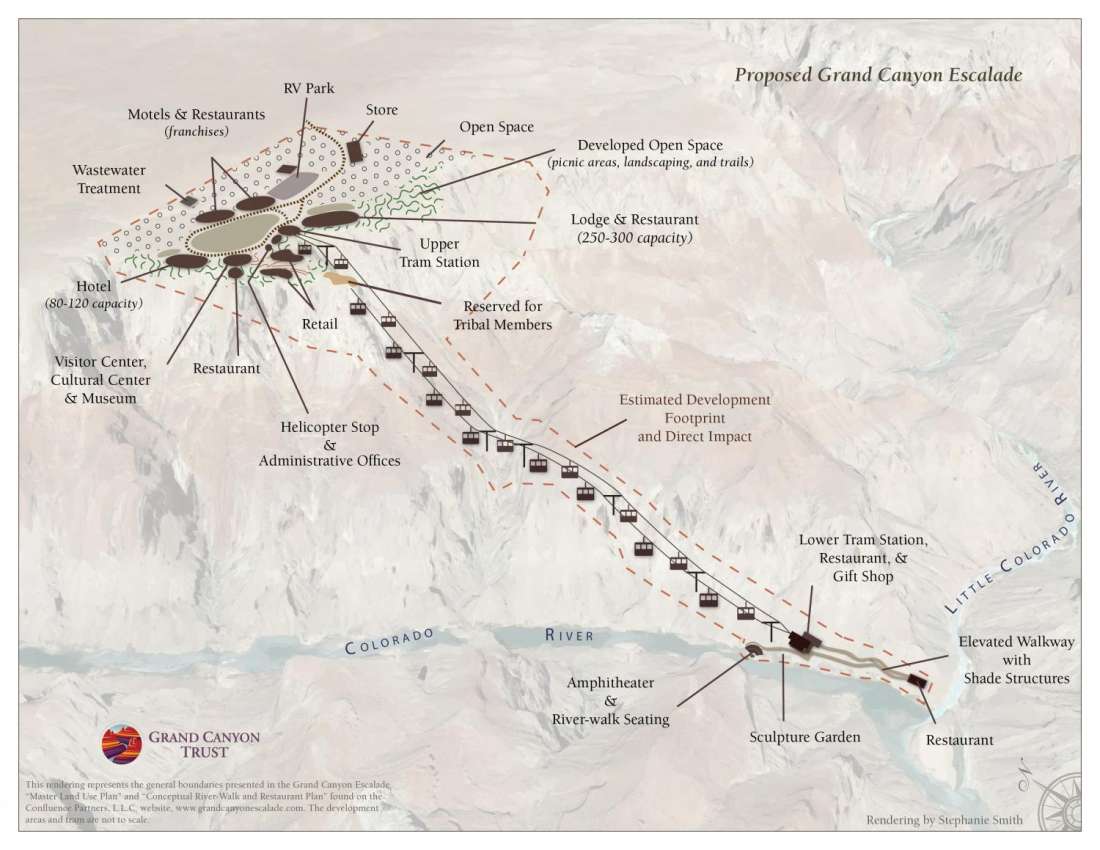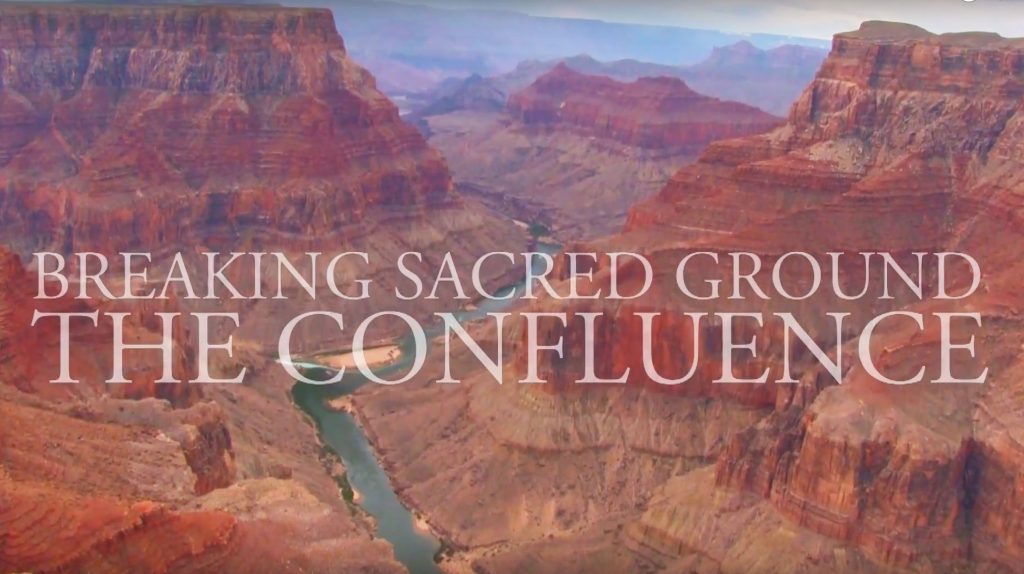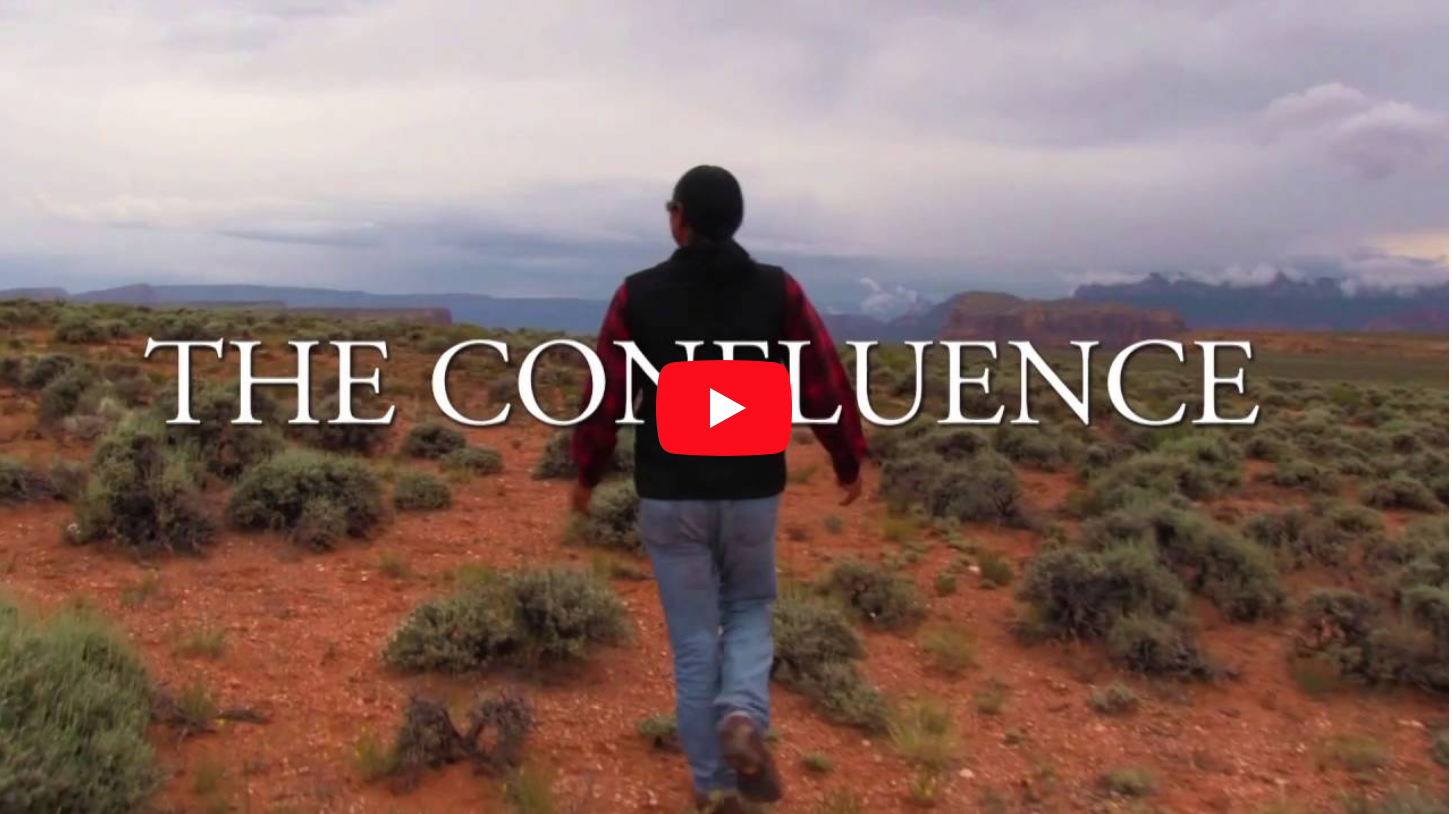Grand Canyon Escalade has been a “zombie development” project that just won’t die. The Navajo tribe resoundingly rejected the idea Tuesday night, when the Navajo Nation Council held a special meeting to consider it and voted 16-2 to reject the plan.
Proposed by a developer from Scottsdale, AZ, Escalade would be comprised of a 1.4-mile tram from the rim of the canyon to the confluence of the Colorado and Little Colorado rivers, a half-mile constructed walkway along the Colorado River, and a 420-acre commercial and lodging footprint on the rim.

The project would have a significant impact on the canyon, bringing between 800,000 and 2 million visitors a year to the eastern side.
It would include 5,000 square feet of restrooms, plus an RV park, airport, restaurant, retail shops, and five-star hotels on the rim. River and helicopter tours would be a part of the package – of particular concern to rafters and kayakers, who’ve been dismayed at the air and river traffic surrounding Grand Canyon Skywalk at the other end of the canyon.
The Escalade developer claims it would add 3,500 jobs, but it would also require the tribe to spend $65 million to build roads and infrastructure. The Navajos also would receive just eight percent of the revenue.
“They heard us,” activist Renae Yellowhorse said of the council members. “We needed to be a presence there to let them know we’re not going to go away. We’re going to always be here to defend our Mother, to defend our sacred sites.”
This was the first time the full council voted on Escalade. The proposal has been through numerous committee hearings and votes and was rejected previously. Supporters amended the plan to make it more palatable — they changed language to make the project approval revocable and also eliminated a rule that would have blocked any other development along a 15-mile stretch of rim.
At the last minute, the developer offered to build a Boys and Girls Club.
Escalade promised to bring significant dollars to the tribe, which suffers from high unemployment and a lack of basic services throughout its lands. Forty percent of Navajo homes don’t have running water, and more than 30 percent don’t have electricity. The Navajo Generating Station, a coal plant near Page that brings $50 million a year to the tribe, is scheduled to close eliminating hundreds of jobs (the Trump administration is fighting to keep it open, though it’s a lack of demand for coal that’s led to the planned shutdown).
Illustration by Stephanie Smith/Grand Canyon Trust | Photo and Video courtesy the Navajo Nation












